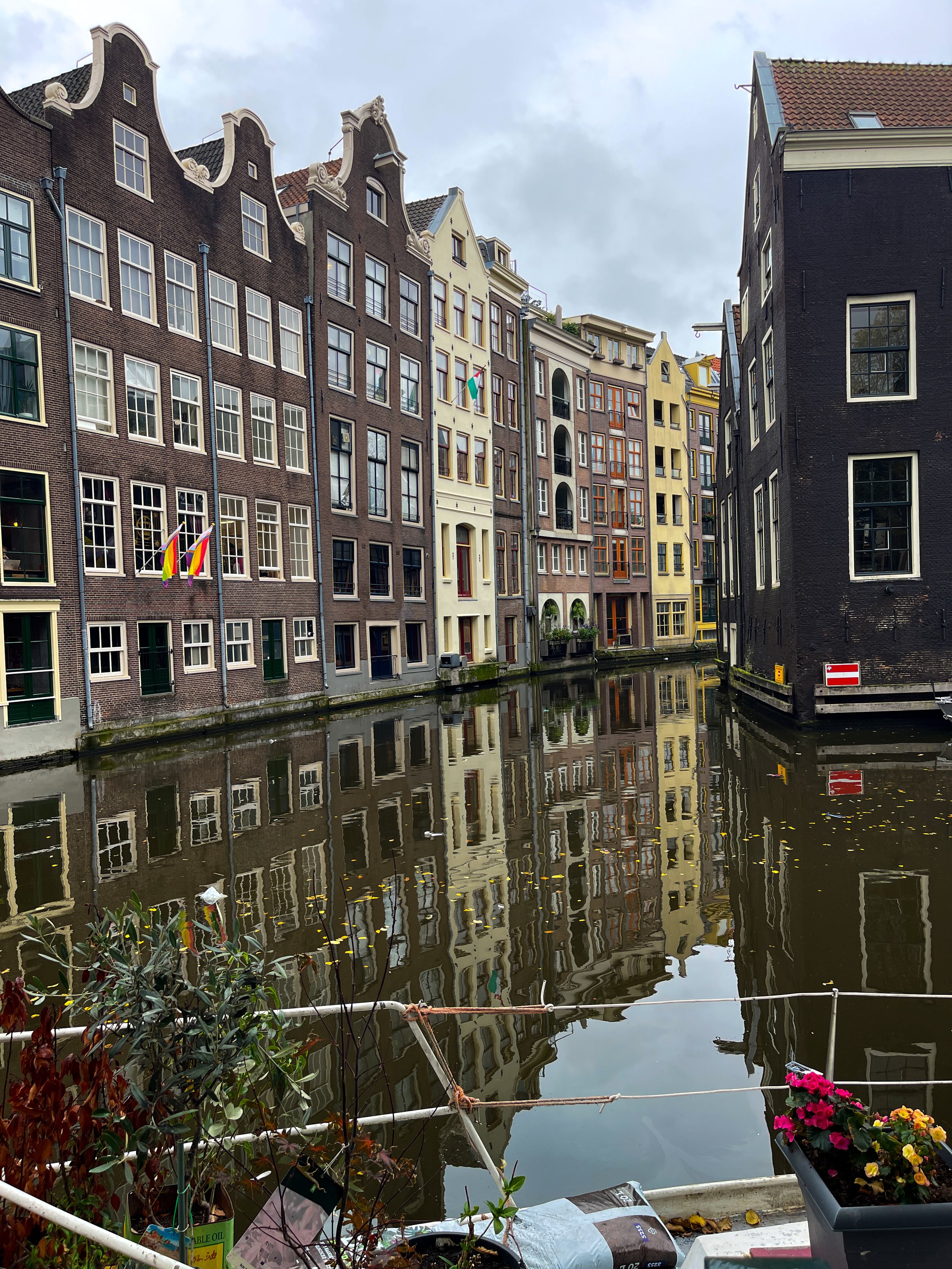Perfuming a Corpse
It's been several months since I have written anything here, most of my time on this blog has consisted of me writing a few sentences and deleting a few hours later. Regardless I am in Amsterdam now, I have been here merely 12 days- so I stand no ground to truly form opinions but I would like to share a few observations and things I have learned since being here.
As mentioned on this site- I am particularly interested in social issues regarding exploitation. In all forms. While in Amsterdam I've been keen on defining exploitation for “sex workers” but not so much sex trafficking despite previously being involved in relief work earlier this year. I've had a handful of questions- is it ethical (morals aside)? How can we define the ethics of exchanging goods? Who has the power? Buyer or seller? Moreover, who has the money? Who is “more” feminist: anti or pro-prostration feminism? Two movements occurring at the same time, arguing for the same liberties, but beginning in different places. Since it is legalized here in the Netherlands, why are new workers not briefed on the statistics of abuse- murders- no pto- statistics of bookkeepers taking advantage of the workers? Is Amsterdam the legal workers biggest Pimp? Has legalization taken a broken system and masked it for the tourists passing through so we don't keel over at this rotten industry? All things I have no answers to!
‘De Wallen’ - Amsterdam's oldest district, built in roughly 1385; now known better as The Red Light District. I am no historian but essentially the red light district became normalized as prostitution became more culturally accepted during the Golden Age in the 17th century. As time progressed a sense of tolerance grew. There is a Dutch word “Gedogen” which is used to define the tolerance policy in the broadest sense, or translated as “turning a blind eye”. For example, coffee shops are not just to enjoy coffee- but as long as recreational drug use is out of sight it is inherently out of mind as well.
Not until the 20th century did the Dutch government officially take a stance on prostitution shifting from a murky reality to legalization. In 2000 the Dutch government legalized brothels and regulated sex work. The policy change had made promises to protect sex workers under labor laws and grant legal permits. This meant they would now have to register, pay taxes, and formally rent a room. So- was legalization a positive and progressive stance that would promote freedom of choice and offer more rights under legal protection or was this a booming industry with taxable dollars? (Considering the Dutch government has owned and operated brothels I lean towards money as motivation- but who knows maybe the Government wanted to prove a point that selling a body can be ethical.)
Legalization offered several benefits: better access to safer working conditions, no longer criminalized, and access to health insurance since they are registered as independent contractors. Legalization also aimed to reduce exploitation making it easier to monitor and intervene when abuse was reported. However, no matter how much perfume you spray over a corpse- it's still rotting.
According to a study by the Dutch National Rapporteur on Trafficking in Human Beings, an estimated 50 to 90 percent of sex workers in the Netherlands are victims of trafficking. This data alone highlights that eliminating exploitation, and legalization has provided a convenient shield for traffickers to operate within a ‘legitimate’ industry. Today, the Netherlands is grappling with a complicated landscape. Despite regulations, over 70 percent of Amsterdam’s sex workers are from abroad, many with unclear immigration statuses, which puts them in highly vulnerable situations. NGOs estimate that the demand for trafficked workers remains high, as the industry prioritizes profit over ethical practices. For every empowered worker, there are several more trapped in cycles of abuse, and the government’s regulatory framework struggles to keep up with the complex, globalized nature of human trafficking today.
Despite these troubling realities, widespread apathy continues to stifle progress. Many view the red-light district as just another tourist attraction, turning a blind eye to the pain behind the glass. Nonprofits and NGOs find themselves fighting a cultural and institutional battle against an entrenched norm.
In personal experience, it's no secret when you have entered a red light district: window shopping at all hours, goucking potential customers, or passersby mocking those on the other side of the glass. Red curtains open and close, an emergency bell rings; a man is removed from a window (each room is equipped with an emergency bell in case of abuse). By night the glowing streets are crowded with foot traffic and drunken people stumbling around; by day nothing has changed other than stuffed in between red windows, there is a kindergarten and little kids are coming to and from school.
What does it take for a person to care enough to want change? Maybe we’ve become numb, or maybe we fear confronting the truth. But if we continue to reduce human beings to commodities, we risk more than just social decay; we erode the foundation of dignity, hope, and human value. Change begins with awareness and the courage to demand better. The red-light district doesn’t need to be sprayed with fresh social projects; it needs to be addressed for what it is.





